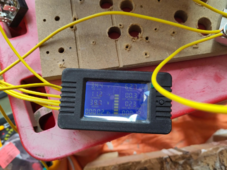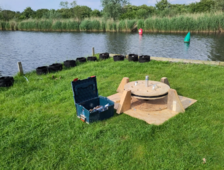I have an update that will make things look hopeful again.
So all this time I should have been focusing on vAC(rms) and not vAC(pp). Now I can better design the coils to end up with the voltage I need at a specific frequency of field reversal.
I have to increase the rotational speed of the PMA. There is no way around it. There is just not eneough energy available in a slow moving disk to extract any meaningful power out of.
I am going to aim for a Hz of 40.7 as I will have to redesign the whole setup if I want a rotation increase of the PMA as opposed to the turbine of more then the 10 times I am aiming for now.
My oscope cannot measure aboth AC and DC at the same time. Readings go all over the place if I do and I nearly burn (with smoke) through the probe measuring the DC.
Also my oscope can only measure either the + or the minus of the DC at a time. So all this time I was only seeing halve wave rectification while in fact all rectifiers I have are full wave.
I make use of a shunt now to measure the voltage/amps/watts going into the battery. Far better results now then with this multi-meter in between.
With only a single 50-100-50 coil @ 0.7mm wire I get uplifting results. Amps and wattages farrr better than I have yet seen.

Coil stable at 47.1C. when running double frequency. When running at the intended frequency that would be 36.7C.
So those coils do not overheat rather quickly and there is quite some more power capacity in them left indeed.
But the amps wand wattage was not that stellar even though nothing to sneeze at.
So I also tried a 5-(13*10)-5 at 1.5mm wire coil in a 3 phase setting at double frequency.

I know the waveform looks funky but that is what you get with a prototype PMA that is not sturdy and thus vibrating.

I like what I am seeing there. 39.7 watts at 11.2 amps.
I am starting to believe this is going to work out if I can just get this 10 x rotation speed to work.







